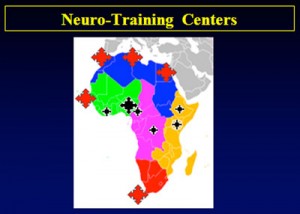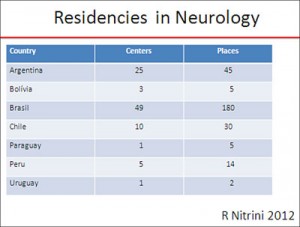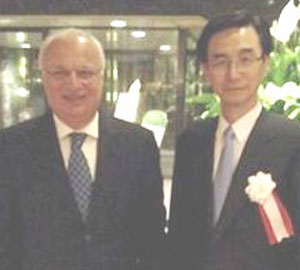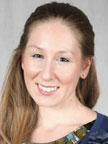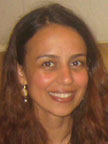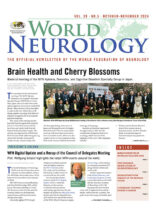 We, the Japanese Society of Neurology (JSN), would like to host the 23rd World Congress of Neurology in 2017 in Kyoto.
We, the Japanese Society of Neurology (JSN), would like to host the 23rd World Congress of Neurology in 2017 in Kyoto.
Founded originally in 1902, the JSN has evolved into a large society with its members topping 8,852 in the past 50 years particularly after its separation, in 1959, from the original society where both neurologists and psychiatrists were members.
During those years, Japan has developed superior human resources in a broad range of neurological subspecialty fields and conducted world-class high-quality research, primarily through cooperation with the World Federation of Neurology (WFN) as well as the Asian and Oceanian Association of Neurology (AOAN). In 1961, two years after the establishment of the current JSN, the AOAN was established through the leadership of our founders and its first meeting, the Asian and Oceanian Congress of Neurology (AOCN), was held in Tokyo in 1962. Moreover, in 1975, Japan launched a system to certify qualified specialists in neurology and has since then produced more than 4,866 board certified neurologists and 2,403 senior fellows.
With this system in place, Japan has built a rich environment to nurture its neurologists. With all this in mind, we are proud to say that the Japanese Society of Neurology has been continuously putting its best efforts to advance research, education and medical practice to a level at par with the best international standards.
The Kyoto WCN meeting in 1981 greatly contributed to the development of JSN and AOAN. Along with international cooperation and the achievements of the past 30 years, Japan is determined to make the WCN 2017 another historic meeting that will serve as a springboard to advance the Asia Initiative of the WFN for the worldwide advancement of neurology in both scientific and clinical aspects. In particular, we would like to focus on three issues in WCN 2017. First, the environment and an aging society are urgent global issues that need to be addressed, especially by the rapidly developing economies of the Asian and Oceanian regions. The Japanese Society of Neurology is in a position to contribute greatly in solving the above based on its experience in overcoming similar issues, as has been seen in its measures in controlling Minamata disease, sub-acute myelo-optico-neuropathy (SMON) and in battling dementia.
Second, Japan is a suitable place to share information and discuss the international cooperation related to neurological medical services in the disaster. Japan experienced not only the Great East Japan Earthquake but also the tsunami and nuclear disaster in March 2011, and has been recovering from the triple disasters thanks to the generous support from all over the world. We would like to discuss the role of neurology in disaster medicine as well as express our gratitude to all the countries that kindly helped us.
Third, as a country with a high standard of neurological service and research, exemplified by the establishment of induced pluripotent stem (iPS) cells and brain machine interfaces (BMI), Japan would be an excellent place to share information on highly efficient neurological medical services as well as results of state-of-the-art studies with our international colleagues, especially those in the Asian and Oceanian region.
Kyoto, famous for its rich history and culture, is a major part of Kyoto-Osaka-Kobe metropolitan area located in the central part of the main island of Japan. A former imperial capital with more than 1,200 years of history, Kyoto is a living museum with a fifth of Japan’s registered national treasures along with 17 UNESCO World Heritage sites, unmatched anywhere else in the world. In addition, Kyoto is a renowned center for its world-class sciences bearing fruit to many Nobel laureates including Shinya Yamanaka, who was awarded with the Nobel Prize for Physiology or Medicine in 2012. His discovery of iPS cells started a revolution in stem cell research not only in neurodegenerative disorders but also in other fields of medicine. Kyoto residents are renowned for their hospitality. Outstanding service can be expected wherever you go, be it meeting venues, hotels, restaurants or enchanting cobbled lanes, you will be welcomed with all the warmth of the cultural heart of Japan. In addition, because of Japan’s reputation for being a friendly and safe place for travelers, tourists feel comfortable traveling alone in the city at any hour of the day.
For the WCN 2017, the Japanese Society of Neurology looks forward to welcoming you to Kyoto, where you can experience the very essence of Japanese traditional and modern culture as well as the major breakthroughs and developments in the field of neurology.
 The Korea Tourism Organization (KTO) and Seoul Tourism Organization (STO) will provide both financial and promotional supports to WCN 2017 to be held in Seoul. The Korean Government, including the Seoul Metropolitan City, sincerely welcomes the World Congress of Neurology and looks forward to meeting the members in Seoul, South Korea, in 2017.
The Korea Tourism Organization (KTO) and Seoul Tourism Organization (STO) will provide both financial and promotional supports to WCN 2017 to be held in Seoul. The Korean Government, including the Seoul Metropolitan City, sincerely welcomes the World Congress of Neurology and looks forward to meeting the members in Seoul, South Korea, in 2017. Neurological diseases inflict high morbidity and mortality in China: Stroke is now the No. 1 cause of death with 1.7 million deaths each year; 9.2 million persons live with dementia and almost half of the 4 million people suffering from Parkinson’s disease worldwide live in China.
Neurological diseases inflict high morbidity and mortality in China: Stroke is now the No. 1 cause of death with 1.7 million deaths each year; 9.2 million persons live with dementia and almost half of the 4 million people suffering from Parkinson’s disease worldwide live in China.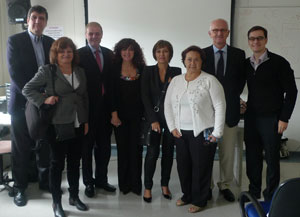
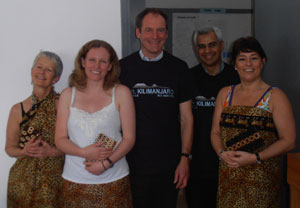
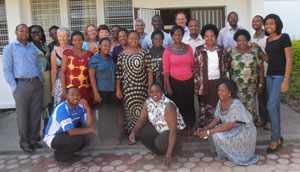
 The UEMS/EBN examination took place for the fifth time and will be taking place next year in Istanbul, at the joint congress of the ENS and EFNS. Both societies, which will soon merge and form the EAN, have contributed by supporting the European board examination by hosting the examination, delivering questions from their scientific panels and also supporting its development, which was funded by the European board of neurology.
The UEMS/EBN examination took place for the fifth time and will be taking place next year in Istanbul, at the joint congress of the ENS and EFNS. Both societies, which will soon merge and form the EAN, have contributed by supporting the European board examination by hosting the examination, delivering questions from their scientific panels and also supporting its development, which was funded by the European board of neurology.